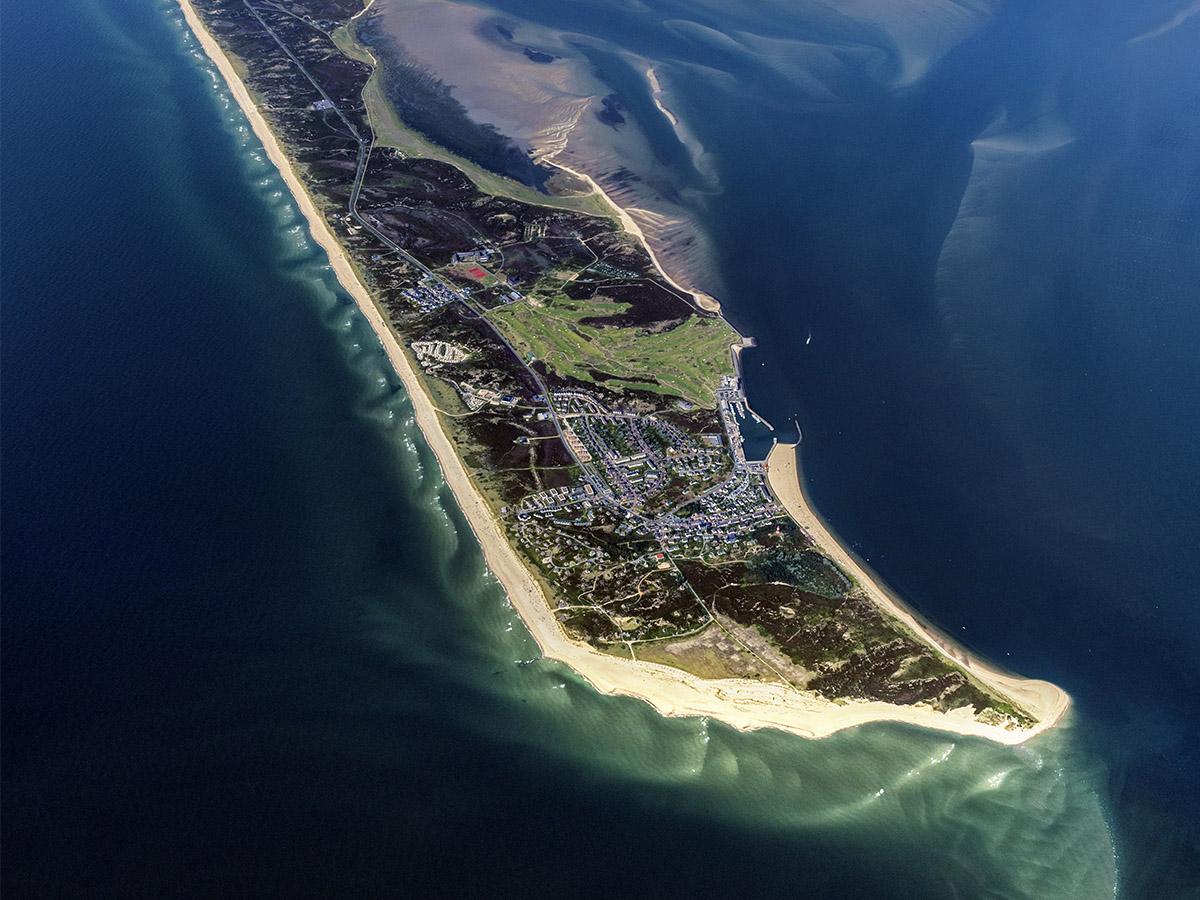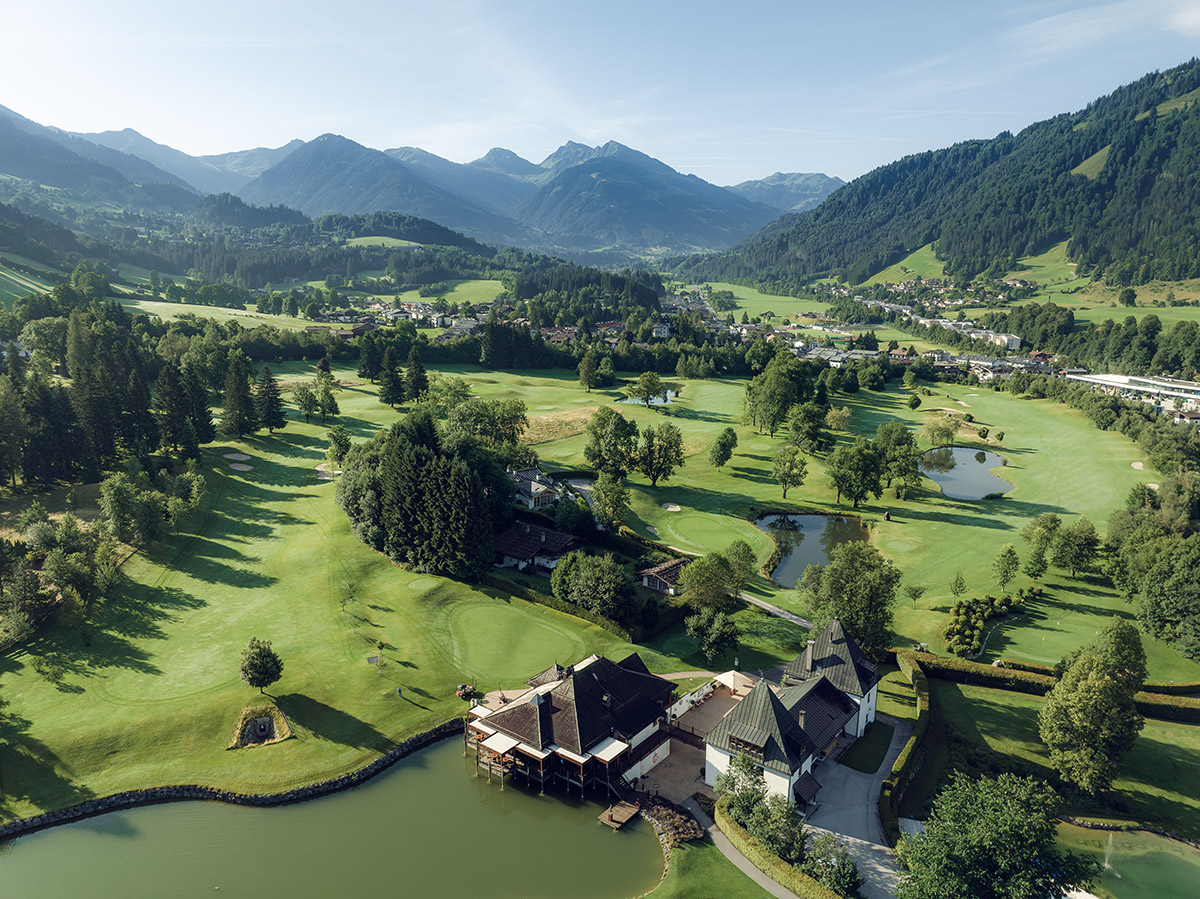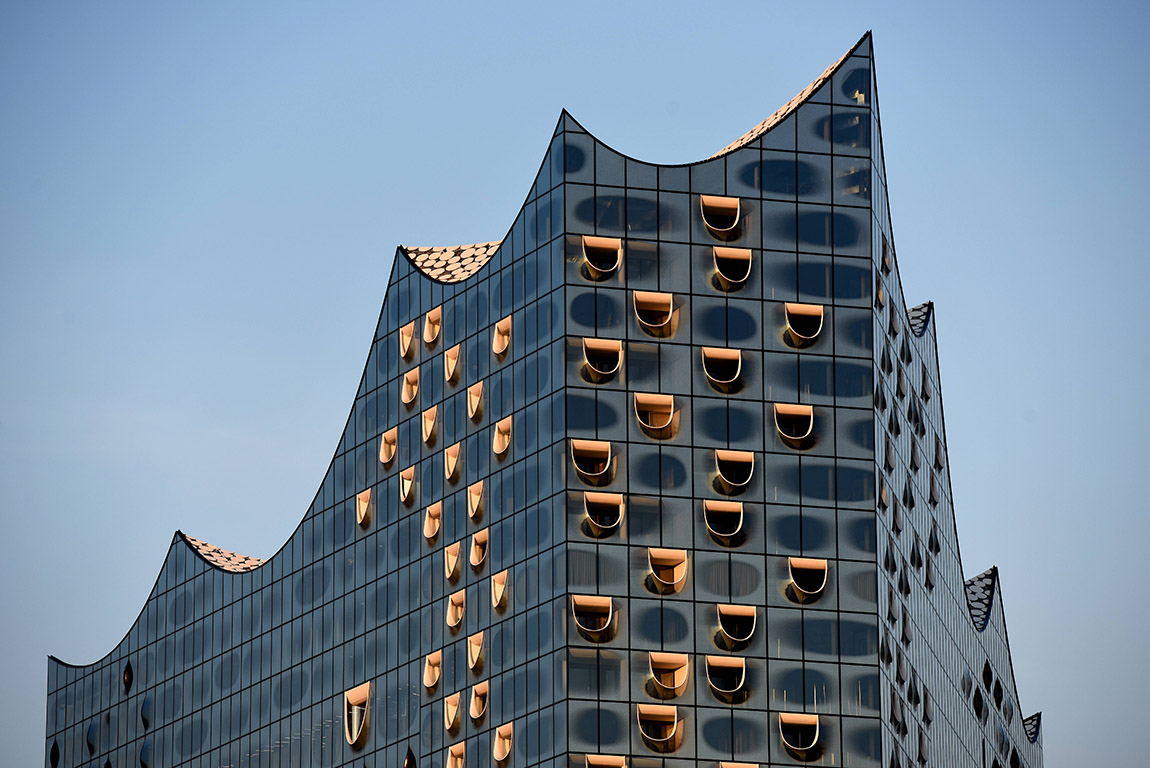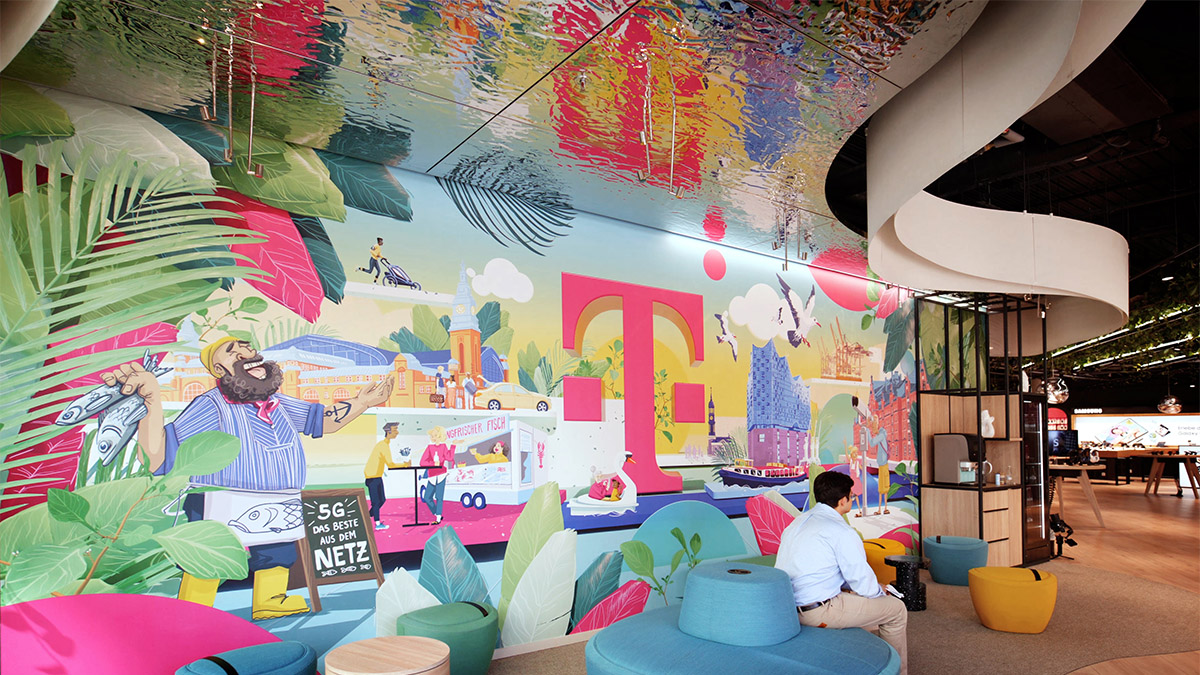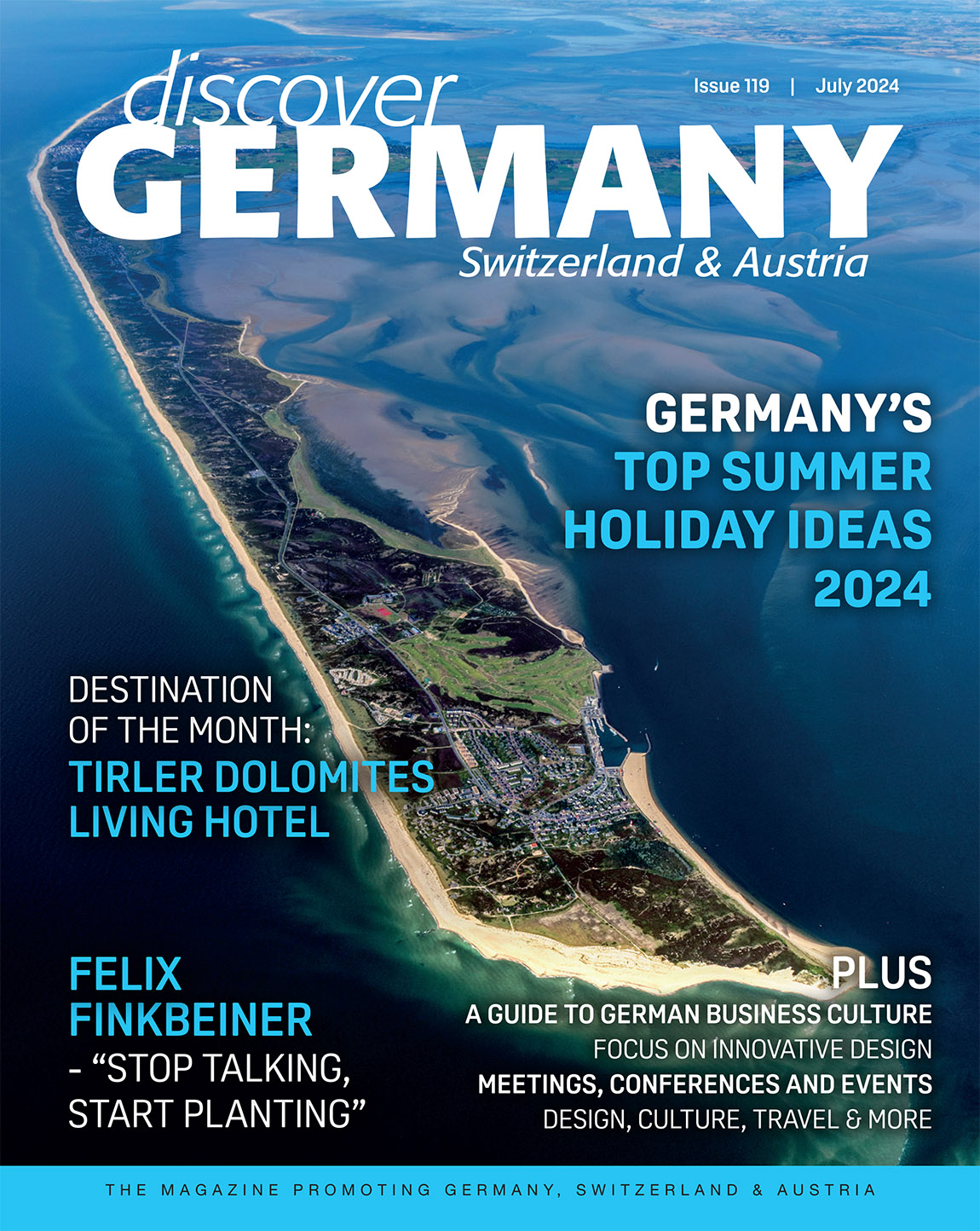Protecting the Baltic Sea – one seagrass plant at a time
TEXT: NANE STEINHOFF, GEOMAR, HELCOM, HELMHOLTZ CLIMATE INITIATIVE
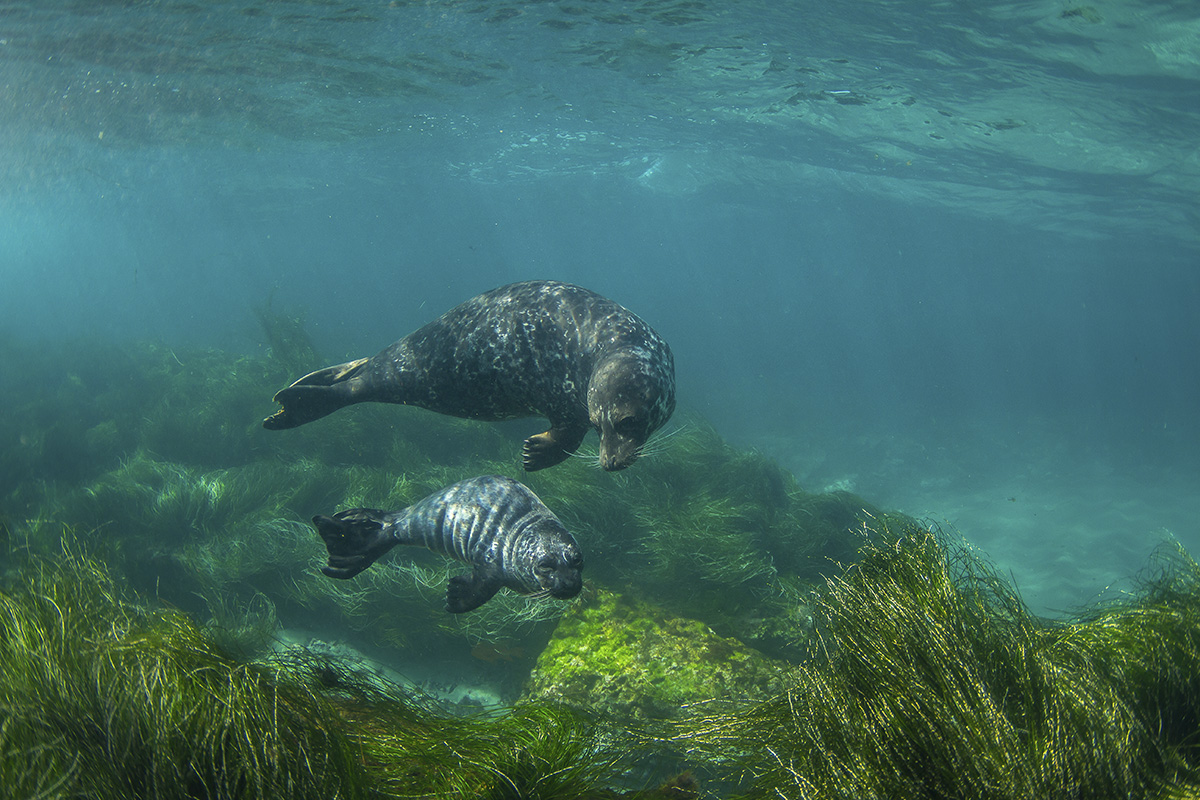
Photo: Ocean Image Bank, Jeff Hester
Despite its popularity with holidaymakers, the Baltic Sea is facing increasing challenges, according to the recently released ‘State of the Baltic Sea 2023’ report. To turn around the fate of the Baltic Sea, numerous individuals and projects are working hard to conserve the sea’s diversity. We met up with some of them to find out more.
Published by the Baltic Marine Environment Protection Commission (HELCOM), the ‘State of the Baltic Sea 2023’ report provides a comprehensive overview of the Baltic Sea’s ecosystem health from 2016 to 2021. While eutrophication and pollution, deoxygenation, overfishing, habitat destruction and land use continue to put the Baltic Sea under increasing stress, little to no improvement of the environment occurred during the assessment period 2016 to 2021, the report finds.
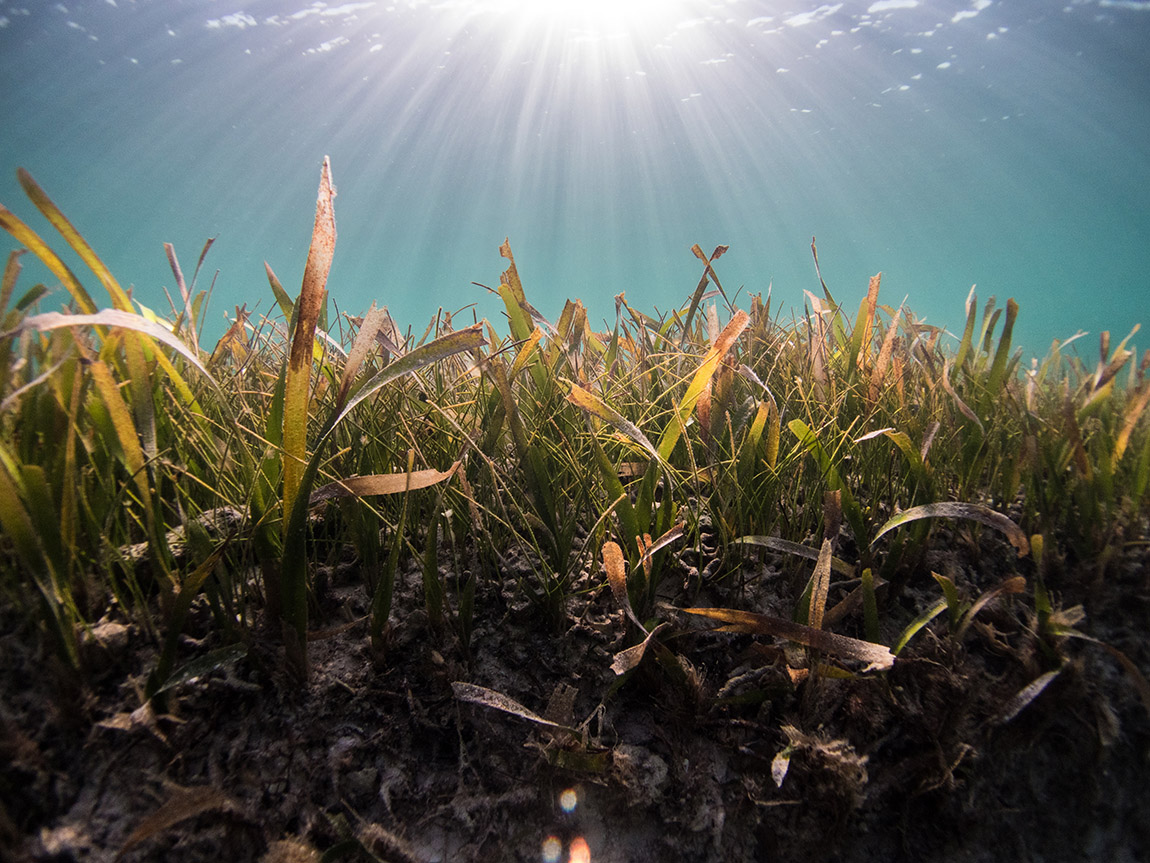
Photo: Ocean Image Bank, Ben Jones
“One key focus of the report is on biodiversity in the Baltic Sea. Many species face multiple stressors from climate change and other human impacts. Only a combination of measures can help to improve their habitats and protect the unique biodiversity of this region that many people depend on,” explains Dr. Jan Dierking, marine ecologist at GEOMAR Helmholtz Centre for Ocean Research Kiel. “One such approach would be to better coordinate scientific research in the region and harness the benefits of model simulations,” adds Dr. Marco Scotti, ecosystem modeller at GEOMAR, a German research institute.
While the poor environmental status of the Baltic Sea clearly impacts a wide range of ecosystem services on which we depend, achieving good environmental status in national marine waters by 2040 has been estimated to be worth 5.6 billion euros per year to the people around the Baltic Sea. The assessment further revealed that when regional measures are implemented, they have a positive impact on the environment.
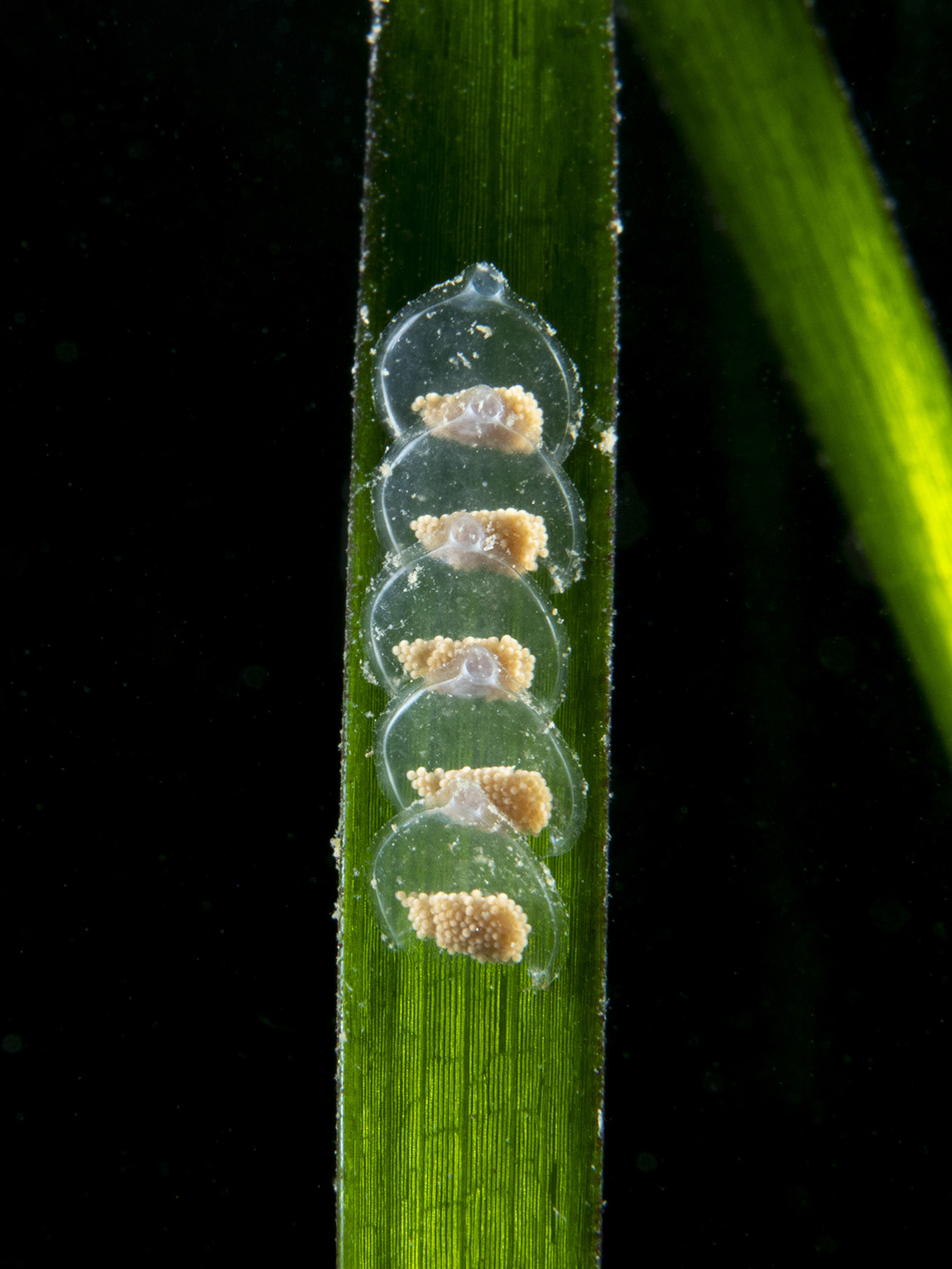
Photo: Ocean Image Bank, Shannon Moran
Regional restoration efforts
Did you know that oceans are among the largest carbon stores on our planet? An important factor is marine plants such as seagrass meadows, mangrove forests and salt marshes, which sequester carbon in the soil. In the German Baltic Sea, for example, seagrass meadows currently store around 3 to 12 megatons. This is significantly more than was previously known, as the first results from Dr. Angela Stevenson from GEOMAR Helmholtz Center for Ocean Research Kiel show.
In the German Baltic Sea, seagrass meadows cover an area of almost 300 square kilometres. They protect the ocean floor and thus prevent the carbon that is bound in the soil from being released into the ocean. This way, the plants bind 29 to 56 kilotons of carbon dioxide per year. In order to determine the exact amount of carbon in seagrass meadows, Dr. Angela Stevenson collected and analysed sediment samples at various points along the entire German Baltic Sea coast as part of the Helmholtz Climate Initiative: “Our preliminary results show that a lot of carbon is stored here, significantly more than was previously known. The sediments under seagrass meadows are two to sixty times as rich in organic carbon as sediments without seaweed.”
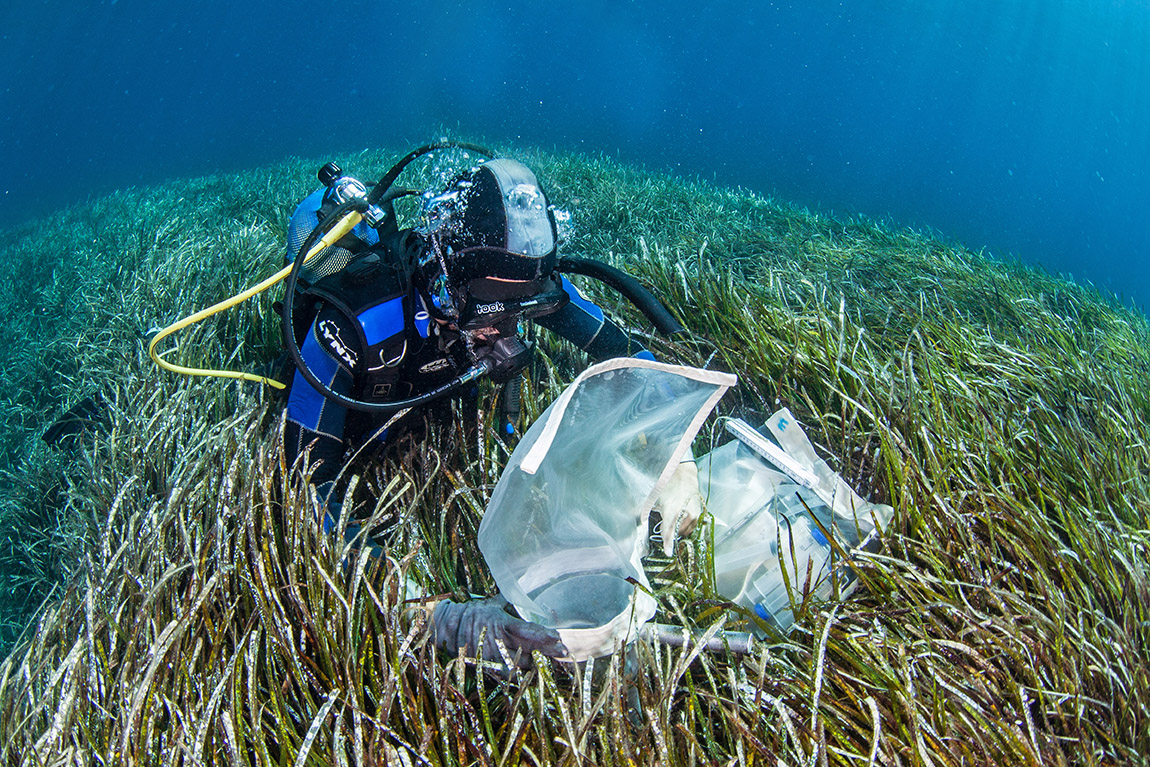
Photo: Ocean Image Bank, Dimitris Poursanidis
Seagrass meadows that were protected from waves stored more organic carbon because the sea floor was less exposed to movement. However, the GEOMAR team was able to make an unexpected discovery: “During our dives, we found veritable hotspots in some places, where 50 times more organic carbon was stored than in the bare sediment,” says Stevenson. “We actually expected low values here because the seagrass is exposed to strong wave activities.” The marine researcher now wants to find out where these hotspots come from: “They cannot be explained by wave exposure or sea water depth alone.” In some sediment samples, the scientists also found pieces of wood that were surprisingly well preserved. These could be from earlier times, before seagrass grew in these places, possibly even before the sea level rose after the Ice Age. “But that’s just a hypothesis for now,” says Stevenson. “We still have to date our samples to know what time the terrestrial material comes from.”
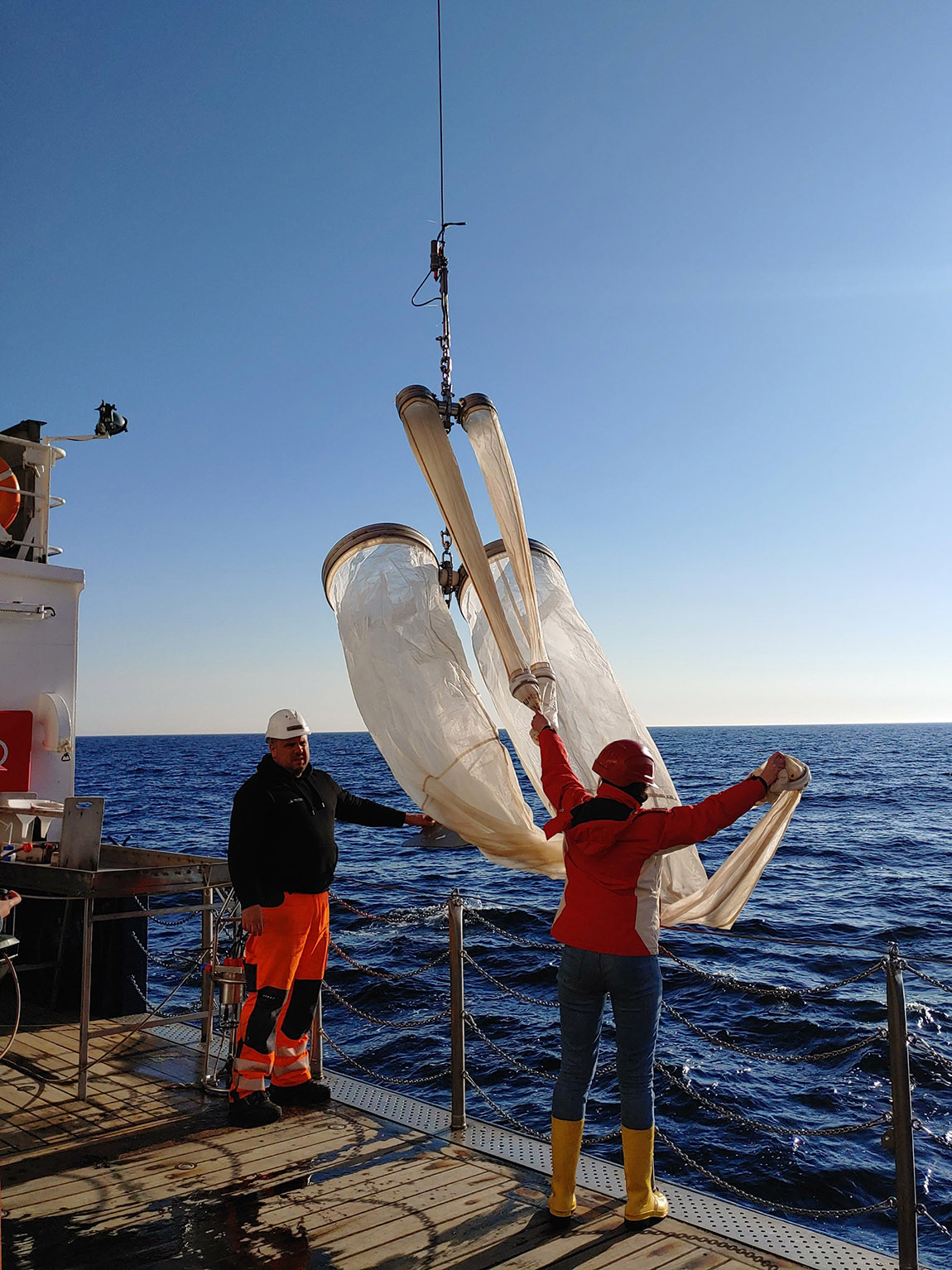
Researchers on board ALKOR use the multi-net to collect plankton samples from different water depths. Photo: Jan Dierking, GEOMAR
The power of seagrass
Seagrass meadows and other marine plants store carbon very efficiently and thus make an important contribution to reducing carbon dioxide emissions. In the ‘SeaStore’ project funded by the Federal Ministry of Education and Research (BMBF), GEOMAR is therefore developing techniques to restore and expand the habitats of seagrass meadows along the entire German Baltic Sea coast. On the coast of Schleswig-Holstein, for example, that would be an area of around 450 square kilometres that could be populated with seaweed.
“With the data from our project in the Helmholtz Climate Initiative, we can identify locations that could store a lot of carbon and specifically plant seagrass here,” says Stevenson. In the future, non-scientists could also participate in the protection of the meadows: “For example, we want to involve the many amateur divers in Germany, to help monitor the health of the newly restored seagrass meadows and to help with the planting of seagrass – like an underwater community garden.”
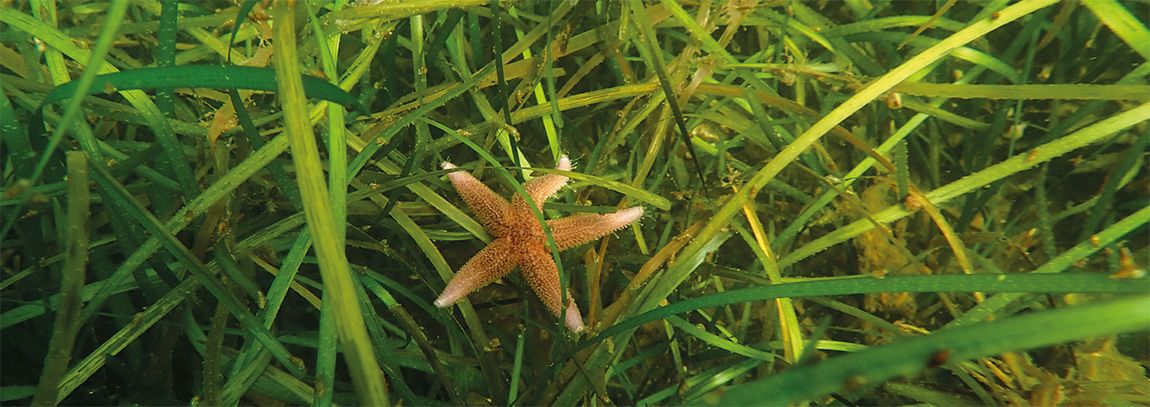
Photo: Tadhg O Corcora, GEOMAR
Towards a better water quality
As part of an exciting project, researchers at Rostock University, GEOMAR Helmholtz Centre for Ocean Research Kiel and Kiel University are currently investigating whether the bladderwrack Fucus vesiculosus, which is widespread in the Baltic Sea, can be cultivated on the foundations of wind power plants and used to improve water quality and utilised as a resource. Centrepiece of the project is a pilot plant in the Eckernförde Bay.
“Even if you do not always see it everywhere, the Baltic Sea is in a bad condition,” says marine ecologist Professor Dr. Ulf Karsten from the Institute of Biosciences at the University of Rostock. “This is mainly due to the still excessive inflow of nutrients, which massively alter the water quality. However, bladderwrack and other algae are able to filter nutrients from the Baltic Sea.” Together with Rostock researchers Dr. Jörg Burgstaler and Dr. Denny Wiedow, biogas specialists at the Faculty of Agricultural and Environmental Sciences at the University of Rostock, he coordinates the project ‘Climate-friendly offshore production of algae biomass’.
The goal of the research project is to determine which measures can improve the water quality of the over-fertilised Baltic Sea. In addition, the algae are high-quality biomass. For example, the idea has already been developed to extract valuable substances for the cosmetics industry from seaweed. The Centrepiece of the new project is a pilot plant in the Eckernförde Bay. With its help, the researchers will investigate whether cultures of macroalgae – mostly the bladderwrack Fucus vesiculosus, frequently found on Baltic Sea beaches – grow on the foundations of wind power plants.
![Photo: Ocean Image Bank, Michiel Vos[/caption]
To this end, the project group will develop raft structures in Eckernförde Bay that resemble the foundations of wind power plants. The bladderwrack will then be grown on these which is said to help reduce the nutrient content in the Baltic Sea. “Brown algae like bladderwrack need nutrients to grow. And there are more than enough nutrients in the Eckernförde Bay. A whole forest of these marine plants could therefore do the bay a lot of good by absorbing plenty of nutrients and thus improving the water quality,” explains Professor Karsten.
Seagrass meadows which play a central role in the Baltic Sea ecosystem would also benefit from improved water quality. They offer small animals and fish both protection and food, store large amounts of carbon dioxide, release oxygen into the water and solidify the sediments on the seabed.
[caption id=](https://www.discovergermany.com/wp-content/uploads/2024/04/OceanImageBank_MichielVos_9-1.jpg)
Photo: Ocean Image Bank, Michiel Vos
Fishing data for science
How much oxygen is there in the Baltic Sea at different water depths? How do the concentrations of this life-giving gas change over the course of the summer? To obtain more accurate answers to these questions and to better assess the effects of oxygen loss on life in the Baltic Sea, GEOMAR Helmholtz Centre for Ocean Research Kiel and Trans-Ocean e.V. – Verein zur Förderung des Hochseesegelns e.V. have invited sailors to go data fishing. Their new joint project ‘Citizen Science: Sailing for Oxygen’ is the first citizen science project that involves a large number of sailors.
Participation in the citizen science project under Sails is easy: Registered crews receive a simple sensor in selected ports in the southern Baltic Sea, which records oxygen concentration, salinity, temperature, and depth. The probe is lowered into the water while stopped or heaved with a deep-sea fishing rod and controlled via an app on a mobile phone. After recovery, the data and the location are transmitted via the mobile phone, made visible online in real-time in the BELUGA data portal and quality controlled. In accordance with the FAIR principles (Findable, Accessible, Interoperable, Re-usable), they are available to everyone interested. Researchers at GEOMAR will use them for example to estimate the supply and loss of oxygen and to identify risks for fish and other marine organisms. Such information is also relevant for adapted fisheries management.
“The ocean is important for our life on this planet in many ways: It controls the global climate and provides us with food, materials, energy, transport and recreational opportunities. And yet it is undersampled. In many places, we lack data from direct ocean observations,” explains Dr. Tanhua, chemical oceanographer at GEOMAR and head of ‘Citizen Science: Sailing for Oxygen’. “With our project, we are collecting important information on the state of the Baltic Sea – together with those who know and love this area. By engaging with sailors, we share our knowledge with each other, raise awareness of marine conservation and climate change issues, and open up opportunities for the general public to get actively involved in science.”
“We sailors have a special connection to the sea and experience the changes first-hand on our trips. Many would like to get involved in marine and climate protection, and we invite everyone to support the project,” says Marcus Warnke, chairman of Trans-Ocean e.V. “The idea to become active together for research evolved about a year ago, and we are pleased to be able to start this project so quickly.”
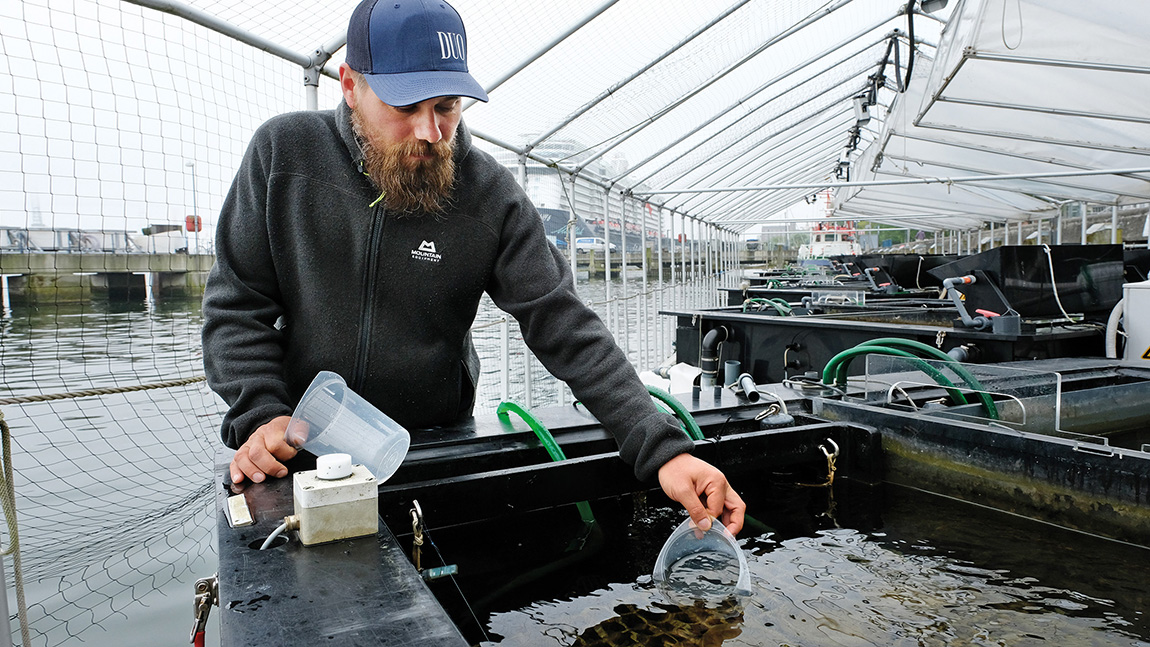
Investigation of water quality in an experimental chamber of the Kiel Outdoor Benthocosms. Photo: Jan Steffen, GEOMAR
To find out more and learn how to get involved, visit: www.geomar.de
www.helmholtz-klima.de
www.helcom.fi
Subscribe to Our Newsletter
Receive our monthly newsletter by email

